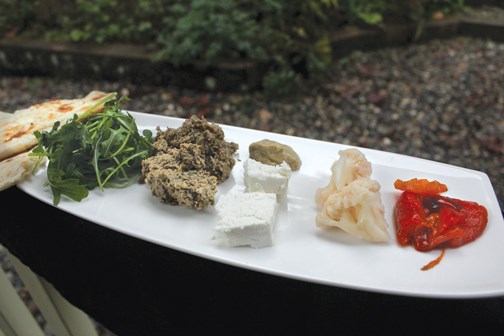Willow trees, of the genus Salix, possess natural analgesic properties.
These properties have traditionally been harnessed to produce salicin, which is metabolized as salicylic acid by the human body, and provided the earliest blueprints for what we now call Aspirin. The tips of the soft, supple leaves of the Rubus parviflorus, more commonly known as the thimbleberry, can be easily folded atop each other and then pinned into place with the stem of the leaf to create a solid and convenient little bowl in which to carry the berries of the plant. Meanwhile, the tender roots of the polypodium glycyrrhiza, or licorice fern, exhibit remarkably sweet and fragrant flavours that come to life when steeped as tea and reportedly contain an ingredient that is a natural remedy for sore throats.
All of this was much more common knowledge when human beings lived directly off the land and were better acquainted with the unique properties of its fruits.
"We can identify thousands of brand logos at a quick glance," says chef and ethnobotanist Saskia Wolsak, "but most of us can barely identify more than 10 plant species. The thing is, you'll never go hungry in the forest if you just know what to look for."
Wolsak, who has worked in kitchens in Costa Rica, Bermuda, and Canada, is a student of how human beings interact with and employ plant life in traditional practices, rituals, celebrations, and everyday routines. She also works with Swallow Tail Tours, a Vancouver-based company that supplies the culinarily adventurous with unique dining opportunities that include pop-up restaurants and fine dining experiences in the wilds of British Columbia. Wolsak leads the botany portion of Swallow Tail's foraging tours through Lynn Valley's lush rainforests. I recently participated in one of these latter adventures and was introduced to the diversity of lesser-known indigenous edibles that thrive right here on the North Shore.
Wolsak and her co-guide for the tour, a 14-year veteran of the Romanian forestry industry and accomplished mushroom specialist, Mircea Preoteasa, led me and a group of nearly 30 other foodies on a two-hour odyssey in and around the woods of Lynn Headwaters that culminated in a lunch of regional flora.
Preoteasa led us through dense, wet vegetation to peer at the plethora of mushroom species that can be found at every turn in our forests. British Columbia is apparently home to a staggering 10,000 different species of mushrooms, of which, happily, only two can be fatal if ingested, while only a handful more are likely to make you quite sick. Preoteasa advised the group to become well acquainted with the two deadly fungi, the Death Cap and the Destroying Angel, both of the genus Amanita, and both aptly named to deter consumption. With the morbid warning out of the way, we investigated the common growing spots of other, much more desirable local mushrooms, including the porcini, the chanterelle and the oyster. It needs to be said that it is illegal to pick mushrooms in B.C. parks, so Preoteasa's tour was an identification-only exercise, although he was more than happy to suggest valuable areas for future, self-led foraging expeditions.
Wolsak took the reigns once the mushroom portion of the tour was complete and led the group around a small expanse of land that bordered the forest. Wolsak identified a mind-blowing abundance of edible plant life that surrounded the group at every moment, making many of us begin to feel guilty for simply moving, crushing all manner of valuable plant life with each brutish step we took.
We sampled young bittercress that grew in barely discernible patches in the grass, its bright, peppery flavour inspiring ideas for new salads and garnishes; we peeled and nibbled the juicy roots and shoots of several fern species, and we learned how to identify various fragrant balms and aromatics suitable for teas, preserves or home remedies.
Once the outdoor lessons concluded, we repaired to a small, rustic cabin at the entrance to the Lynn Headwaters park called the BC Mills House. Inside, a rustic and thoughtful cold lunch awaited, comprised of some of the same organic ingredients we had just encountered outside.
Earthenware bowls of coarse porcini, chanterelle and oyster mushroom paté provided the centrepiece for three communal tables. The spread also included a delicious pickle of alderwood-smoked red capsicum, its smokysweet taste providing an exceptional complement to a bowl of sharp, nutty arugula. Pickled cauliflower paired nicely with a creamy, homemade baba ghanouj, while sheets of sangak, a traditional Persian flatbread, served as a perfect vessel for moist, crumbling morsels of sheep's feta drizzled with white truffle oil; would that truffles were indigenous to our local forests! For dessert there was a dense and tasty fruit bread and chilled lemon balm tea.
The entire Swallow Tail Foraging Tour, including lunch, was $39. For more information or to book a reservation, contact Swallow Tail Canada. 778-855-9453 swallowtail.ca
Chris Dagenais served as a manager for several restaurants downtown and on the North Shore. A self-described wine fanatic, he earned his sommelier diploma in 2001. Contact: hungryontheshore@gmail. com.



